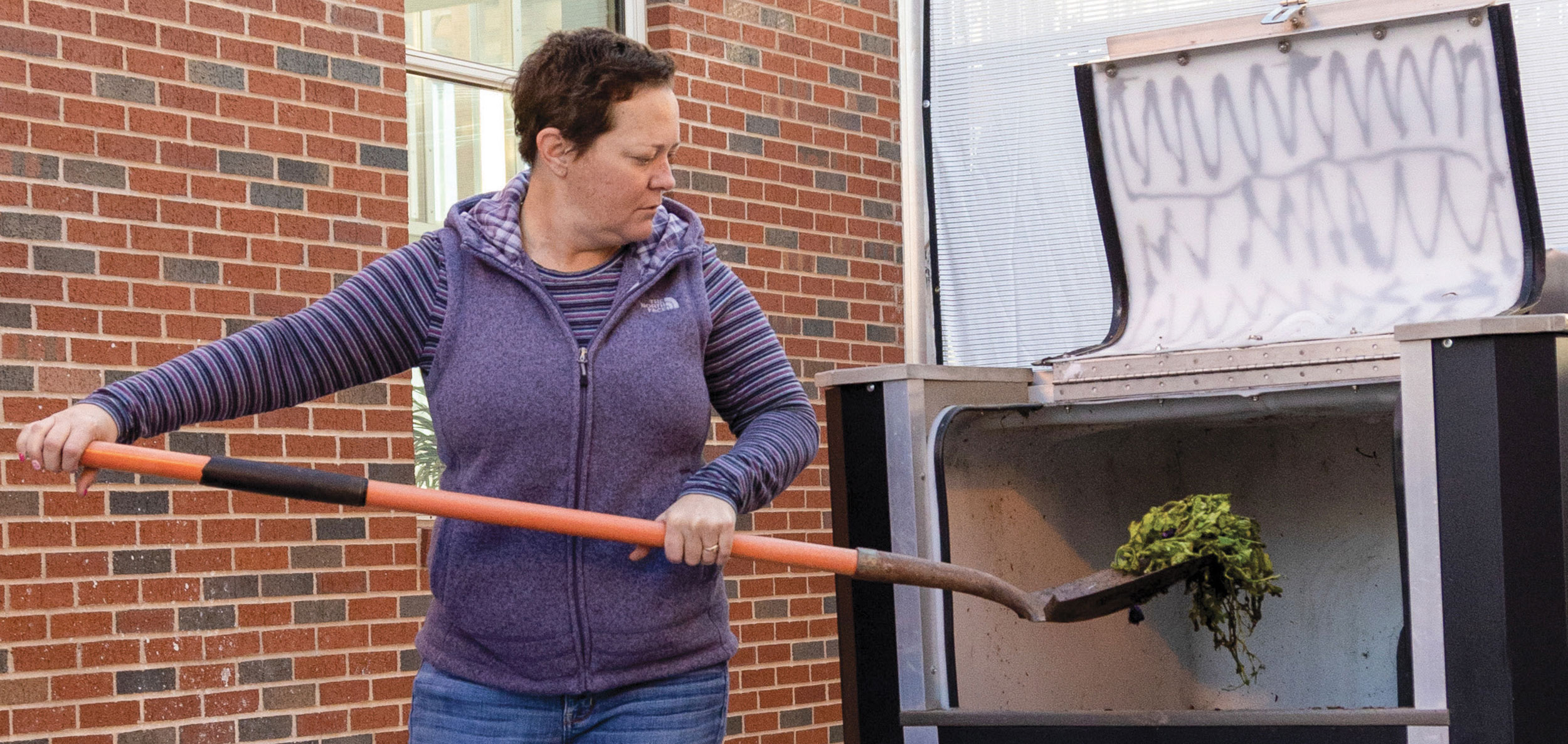
Next Gen Composting
Friday, December 17, 2021
Media Contact: Samantha Siler | Communications and Marketing Manager | 405-744-2977 | samantha.siler@okstate.edu
New facilities bring fresh, transformed opportunities to the Oklahoma State University campus. The Greenhouse Learning Center opened on campus in Fall 2019, providing the perfect space for unique and state-of-the-art composters called Earth Cubes.
“We are trying to find a way to reuse all the consumer food scraps from the kitchens around campus,” said Adrian Alexander, student worker for the Greenhouse Learning Center. “The goal is to recycle all the food scraps and make campus more sustainable.”
Green Mountain Technologies designed Earth Cubes as an entirely enclosed composting system said Holly Pasmore, senior agriculturist in the OSU Department of Horticulture and Landscape Architecture.
Since the Earth Cube is enclosed, aerated and well-insulated, the system can compost waste like dairy and meat, which typically are not compostable in traditional setups, Alexander said.
The inner workings of an Earth Cube consist of two compartments, said Phoebe Austerman, OSU Horticulture Club president. The first is the material being composted, and the second is the finished compost.
Within the Earth Cube are two types of recyclable materials. Green material is plant matter, and brown material is carbon. The ratio or mix between the two is the amount of each it takes to start the decomposition process of composting, Alexander said.
“The idea came to life when people started researching ideas to reuse food waste because a lot of excess food was being wasted from the dining options at Villages, Gallagher-Iba Arena and the OSU Twenty Something,” Alexander said.
“Having open compost on campus and close to where students live and attend classes doesn’t look or smell great,” he added. “We were looking for another option to have at the new greenhouses.”
In October 2020, two Earth Cubes were installed into the Greenhouse Learning Center.
“I chose this particular style of Earth Cube vessel because it did an excellent job in trapping the odors and keeping pests and animals away,” Pasmore said. “The Earth Cube also does an efficient job at controlling moisture in the compost and keeping it at a good level.”
Austerman looked into the possibility of using leaf litter and other organic materials from OSU landscaping and facilities management in the Earth Cubes as a brown material source.
Finished compost has been applied to the gardens surrounding the greenhouse, but Austerman said the compost has additional uses.
“When we started this project, we weren’t really sure where to use the compost we would create,” Austerman said. “It’s not just for gardens, and the perfect application for compost would be to crops. The OSU Department of Plant and Soil Sciences is using it there and has been successful.”
Earth Cubes filter out methane naturally produced in the composting process, Alexander said, so smell does not come from the compost.
Despite the great outcomes from using Earth Cubes, a few drawbacks come from living in a climate like Oklahoma, he said.
High humidity and heat have proven to be a challenge for the Earth Cube research project, he added.
“The Earth Cube was made in a colder climate so the ratios between the green and brown materials have been our biggest struggle,” Alexander said. “Trying to figure out that ratio in Oklahoma with all the crazy humidity here is a challenge.”
Pests and proper conditions often make composting at home difficult, Alexander said. The Earth Cube is a perfect solution and is capable of taking waste from multiple families who may want to partner on the unit since it can be a costly investment, he said.
Due to the COVID-19 outbreak, more people began gardening and doing home projects. This has led to more waste product being thrown out at home, Pasmore said.
“The Earth Cube is a solid, well-built vessel,” Pasmore said. “It has superior odor control and is easy to use as well as being a great model for the home gardener or for schools, colleges and small businesses.”
While successful at this scale for research purposes, the Earth Cubes may be too small for the amount of waste the Student Union is producing, Alexander said. The design is simple, and we could build our own if this becomes an option for sustainability on campus, he added.
Story By: Malcolm Rodriguez | Cowboy Journal
